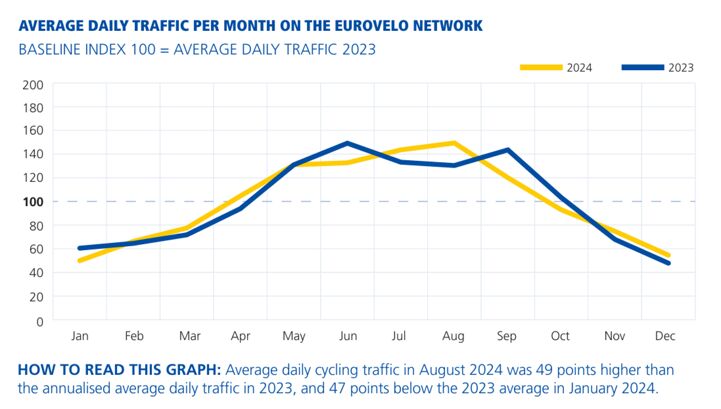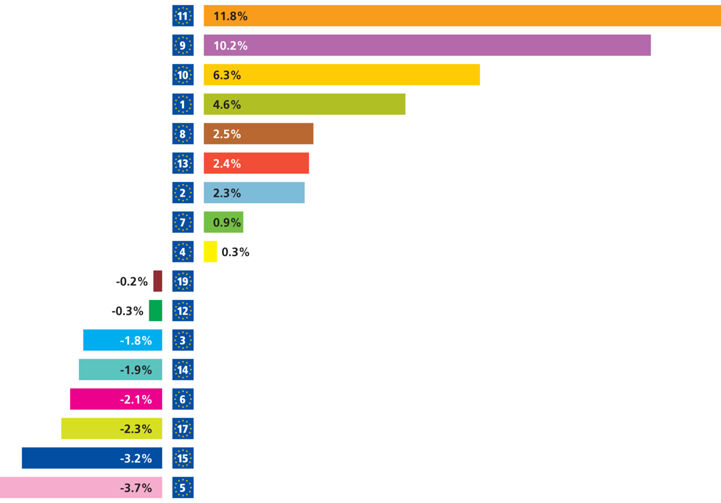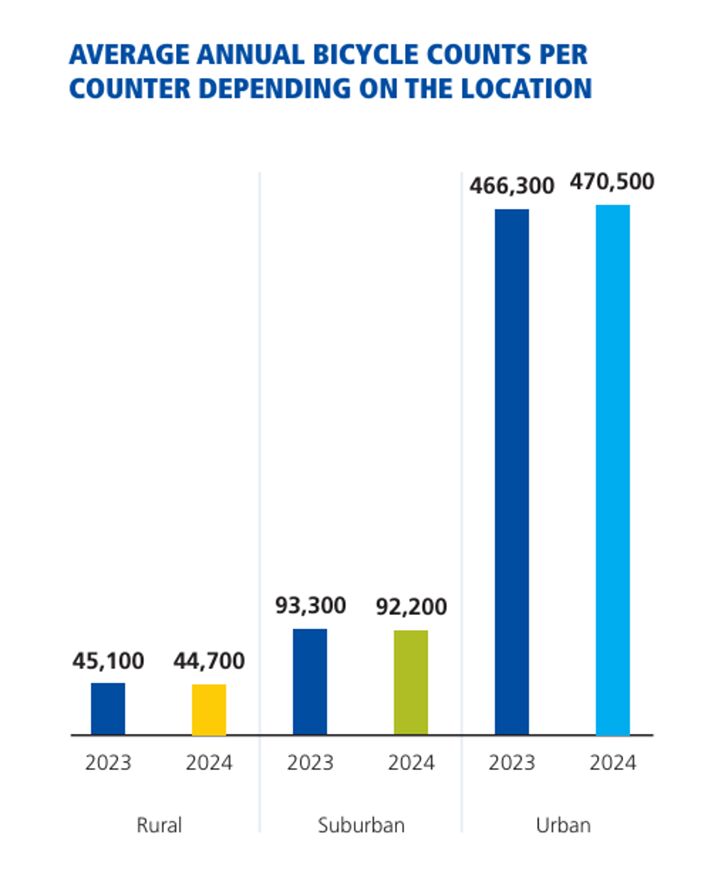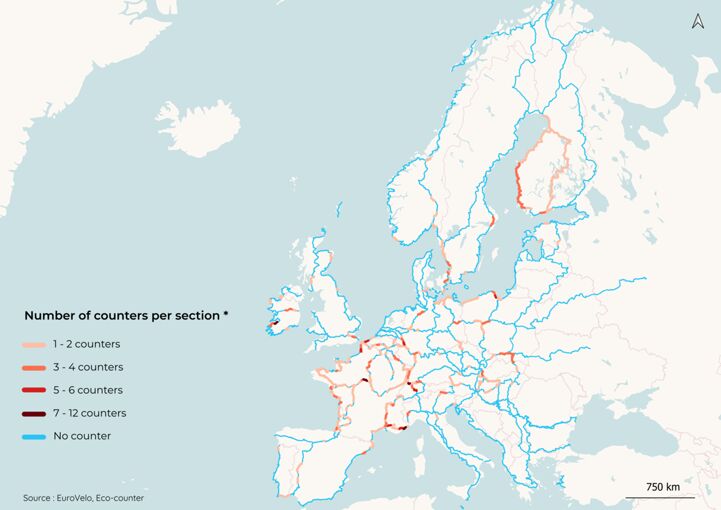Cycling on EuroVelo remains strong in 2024, with weekend growth and seasonal shifts
Cycling Traffic Trends in 2024

The latest EuroVelo Usage Barometer for 2024, published in collaboration with Eco-Counter, confirms that cycling traffic on the EuroVelo network remained largely stable compared to 2023, with a slight overall increase of +0.5%. While weekday traffic showed no significant change (-0.1%), weekend cycling grew, rising by +2.2%. This suggests a more dynamic development of leisure cycling, possibly influenced by favourable weather conditions and changing habits.
Compared to pre-pandemic figures, cycling levels across the EuroVelo network showed a sustained increase, with a notable +10.3% growth since 2019. Despite this long-term trend, largely steady traffic levels in 2024 compared to 2023 indicate a plateau after the COVID-19-induced cycling boom. This points towards a need for further investments in the network in order to ensure renewed substantial growth in future years.
Seasonal variations were observed, with winter (+1.2%) and autumn (+4.5%) recording increases in cycling traffic, leading to a further flattening of the seasonal curve. However, spring traffic saw a decline (-1.7%). Weather conditions, such as excessive rainfall and flooding in June and September 2024, could have contributed to this shift. Future studies will be necessary to analyse the impact of meteorological factors on EuroVelo traffic patterns.
Route-Specific Developments
For the first time, the 2024 Barometer analysed traffic trends for all 17 EuroVelo routes, revealing considerable variations. Seven routes recorded increased traffic, with the highest growth on EuroVelo 11 (+11.8%) and EuroVelo 9 (+10.2%). In contrast, six routes saw a decrease, with EuroVelo 5 experiencing the largest decline (-3.7%). Four routes remained relatively stable. Despite the larger sample of counters compared to previous years, big differences persist between EuroVelo routes regarding the number of Eco-Counter sites, which have to be taken into account in the analysis.

Urban, Suburban, and Rural Cycling Trends

Another key development in the 2024 Barometer compared to previous years is the categorisation of counting sites based on their location: urban, suburban, or rural. Traffic remained stable across all three types, with a slight increase in urban areas and a marginal decline in suburban and rural locations.
The data also confirmed that urban sites record substantially higher traffic volumes than suburban (5x) and rural (11x) locations. This underscores the significance of local cycling in urban areas, even on EuroVelo routes. However, rural areas still recorded a strong annual average of over 44,000 bicycle counts, highlighting their relevance for cycling tourism, daily rural mobility, and sustainable transport.
Methodological Enhancements and Future Insights
The 2024 EuroVelo Usage Barometer saw a substantial increase in the number of data points, with 546 Eco-Counter sites in 20 countries used for analysis, compared to 195 in previous editions. This improved data collection allows for a more representative assessment of cycling trends across the continent. However, significant differences in representativeness remain between countries and routes. We hope to grow the sample of counters even further in the future to level these differences.

While overall growth has plateaued, the rise in weekend traffic, the flattening of seasonal peaks, and the geographical distribution of cycling activity all point to evolving trends in cycling habits. Further research, particularly linking traffic data with meteorological patterns, could provide deeper insights into these shifts.
The EuroVelo Usage Barometer: A successful collaboration between ECF and Eco-Counter
The European Cyclists' Federation and Eco-Counter work together since 2020 to gather data about the usage of EuroVelo routes using a sample of currently 546 counters installed all across Europe. We monitor data at the beginning of each calendar year and at the end of the summer season. The EuroVelo Usage Barometer, formerly published as the EuroVelo Usage Monitoring Report, is part of the EuroVelo Data Hub.
Article by Holger Haubold
Cover photo: Belen Castelló / EuroVelo 19 Partnership